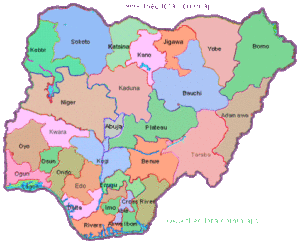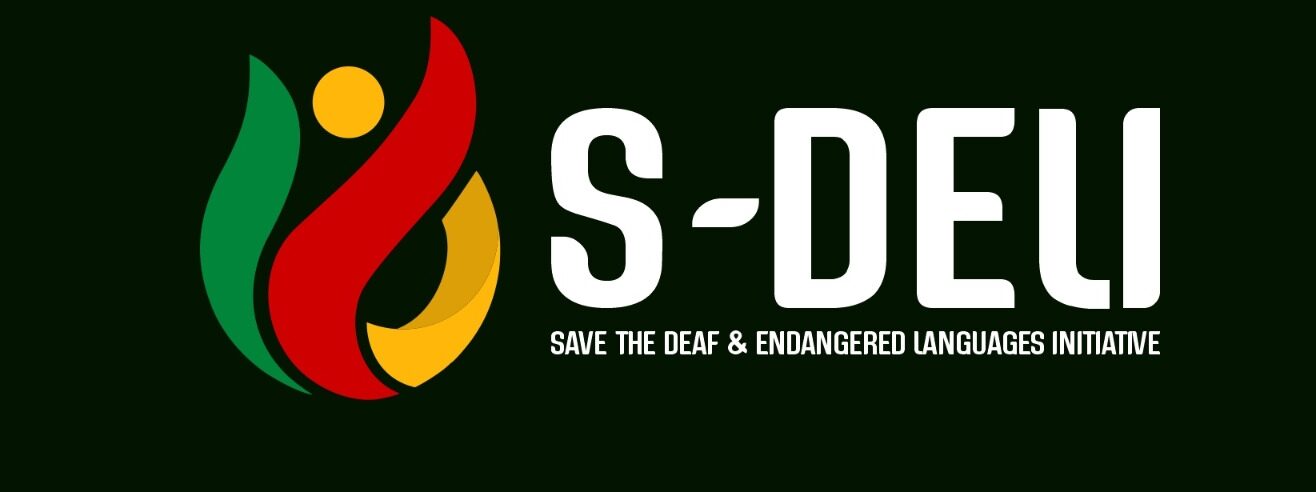What’s this Fuss about Nigerian Sign Language?
 My colleague, Ibrahim Garba[i] and I have had a long chat on the issue of Nigerian Sign Language Vs. Nigerian Signed Languages, and I observed that our arguments complement each other, but from different perspectives. Mr. Garba is a PhD student studying the Morpho-Syntactics of Hausa Sign Language, and does not agree to the existence of Nigerian Sign Language[1] as a language of Deaf[2] in Nigeria, but Nigerian Sign Languages as varieties of regional languages of Deaf in Nigeria. On the other hand, my study is dedicated to the documentation and development of Nigerian signed language and languages. Mr. Garba and I agree that Nigerian Deaf have a means of communication that is indigenous and cultural to them, especially at the community and regional levels, but at the national level, Mr. Garba believes that the language the Nigerian Deaf use, is American Sign Language (ASL). However, Mr. Garba is not alone in this ideology. Over the course of my study in deaf communities across Nigeria, I have found out that many deaf adults, who have passed through the school system of any level, deaf educators, and signed language interpreters believe that Deaf in Nigeria use American Sign Language, because that is what is approved in the school curriculum for Deaf education, although they believe that the ASL used by American Deaf signers is different from the ASL used by Nigerian Deaf signers, for instance, the grammar of ASL is largely expressed on the face, and has a different word order.
My colleague, Ibrahim Garba[i] and I have had a long chat on the issue of Nigerian Sign Language Vs. Nigerian Signed Languages, and I observed that our arguments complement each other, but from different perspectives. Mr. Garba is a PhD student studying the Morpho-Syntactics of Hausa Sign Language, and does not agree to the existence of Nigerian Sign Language[1] as a language of Deaf[2] in Nigeria, but Nigerian Sign Languages as varieties of regional languages of Deaf in Nigeria. On the other hand, my study is dedicated to the documentation and development of Nigerian signed language and languages. Mr. Garba and I agree that Nigerian Deaf have a means of communication that is indigenous and cultural to them, especially at the community and regional levels, but at the national level, Mr. Garba believes that the language the Nigerian Deaf use, is American Sign Language (ASL). However, Mr. Garba is not alone in this ideology. Over the course of my study in deaf communities across Nigeria, I have found out that many deaf adults, who have passed through the school system of any level, deaf educators, and signed language interpreters believe that Deaf in Nigeria use American Sign Language, because that is what is approved in the school curriculum for Deaf education, although they believe that the ASL used by American Deaf signers is different from the ASL used by Nigerian Deaf signers, for instance, the grammar of ASL is largely expressed on the face, and has a different word order.
American Sign Language (ASL) is the cultural and official language of deaf people in America, it is not a universal language. The history of the introduction of ASL to Nigeria dates back to the 1960s, when Andrew Forster, an African American deaf missionary used Old American Sign Language in teaching deaf children in the then Western Province of Nigeria, leading to the establishment of deaf schools in Lagos and Ibadan. Today, over 5 decades, after, the ASL used in America has evolved and developed through conscientious efforts of American Deaf Scholars and Linguists, having little or no intelligibility with the signed language variety used in Nigerian schools for Deaf education, yet, some members of Nigerian Deaf Community (NDC) are comfortable to claim they sign ASL. The signed language used in Nigerian Deaf Schools (NDSs) for Deaf education, no doubt shares certain similar vocabulary, most of which are English words, with ASL, just like ASL shares from English vocabulary, but with a different grammatical structure. This is not surprising, since English is still a language of instruction in Nigerian schools, as well as a dominant language in America.
Although certain Sign Linguists (foreign) have referred the signed language used in Nigerian Deaf Schools to as Nigerian-ASL, it is our view that such a nomenclature promotes linguistic genocide, and mitigates against the development of the language, since its users think of it as a foreign language. It also puts a Nigerian signer in an uncomfortable situation when confronted with a scenario where ASL is signed, and s/he does not comprehend, having already claimed to be an ASL signer. The linguistic fact remains that ASL does not represent the culture of the Nigerian Deaf; it represents the culture of American Deaf. Even if we were to take the signed language used in NDSs as a dialect of ASL, the geographical mapping of America and Nigeria does not support the argument since they are two linguistic communities separated by thousands of miles (although some Nigerian deaf individuals study in Gallaudet University, where they are enculturated in ASL). Our premier argument, therefore, is that although the signed language used in Nigerian Deaf Schools for Deaf education has the form of spoken English, it is not ASL, but is more appropriately referred to as Signed Exact English (SEE), Manually Coded English (MCE), or Simultaneous Communication (SimCom – speaking and signing at the same time), which attempts to represent English.
Nigerian Signed Languages Vs. Nigerian Sign Language
Before the emergence of Old ASL in Nigeria by Andrew Forster, some Nigerian Special Educators, and Social Welfare personnel such as S.A. Dawodu, Allison Izzet, and a few others, had engaged in some organized attempts through the Society for the Care of the Deaf, to teach deaf children using some form of signed language. Before this time, however, we assume that deaf people at different Nigerian communities were using some form of signed languages to communicate with their families and with one another. Until today, deaf children at different communities have continued to develop signs, and use them for interpersonal communications, and some of these signs find their way into the deaf schools, when they get enrolled in schools, where they are either overshadowed by the classroom signs or adopted by the school system. We have seen such signs in deaf schools in Kuje in Abuja, Orodo in Imo State, and in Lagos.
Now, our argument is that, we do not doubt the existence of dialects of Nigerian Sign Language at the country’s different geopolitical regions, but the existence of dialects or regional varieties of a language does not eliminate the existence of a more standard version of the language. If there are dialects of Nigerian Sign Language, there is, and should be a standard version, and that standard version is not American Sign Language; that standard or widely acceptable version is not foreign – it is indigenous, it is Nigerian. Even in spoken language, Nigerian English/Nigerian Pidgin is indigenous, it is Nigerian, used by Nigerians to express themselves in ways that foreigners hardly understand. However, signed language is not a signed version of spoken language – it is a natural language of the Deaf, historically developed among deaf signers as an embodiment of Deaf Culture.
[1] We use the expression Nigerian Sign Language to refer to the linguistic entity, which is an embodiment of the culture of deaf people in Nigeria, and the expression Nigerian signed language as a more general term “parallel to spoken or written language (Wilcox, 2009).
[2] Deaf with the big ‘D’ is widely used in literature to refer to those who are culturally deaf (see Padden & Humphries, 1988; Padden, 1999; Stokoe, 1999; Kannapell, 1999; Wilcox & Wilcox, 2002), as opposed to other signed language users, who are also members of a deaf community. We also use the term here as a collective noun rather than adjective.
[i] My colleague, Garba and I would appreciate your constructive comments on this issue, both Deaf and Hearing, as we keep the perspective towards the documentation and development of a standard Nigerian Sign Language.
_________________________________________________________________
Sources
Adelogbe, R. A. (1974). Curricula and methods in education of the Deaf in Nigeria. Presented in
United Nations Educational Scientific and Cultural Organization: Expert meeting on education of the Deaf. Paris: UNESCO Headquarters. September 1974.
Kannapell, B. (1989). Inside the Deaf community. In Wilcox (ed.) American Deaf Culture: An
Anthology. Maryland: Linstok Press.
Padden, C. (1989). The Deaf culture and the culture of Deaf people. In Wilcox (ed.) American
Deaf Culture: An Anthology. Maryland: Linstok Press
Stokoe, W. C. (1989). Dimensions of difference: ASL and English based cultures. In Wilcox
(ed.) American Deaf Culture: An Anthology. Maryland: Linstok Press.
Wilcox, S. & Wilcox, P. P. (2002). Learning to see: Teaching American Sign Language as a
second language (2nd Ed.) Washington D.C.: Gallaudet university Press.
8 Comments
Add comment Cancel reply
You must be logged in to post a comment.

[…] Retrieved from: https://s-deli.org/whats-fuss-nigerian-sign-language/ […]
[…] the signed language situation in Nigeria can be described as chaotic and confusing. Most signers (deaf and hearing) get trapped in the […]
[…] the signed language situation in Nigeria can be described as chaotic and confusing. Most signers (deaf and hearing) get trapped in the […]
[…] the signed language situation in Nigeria can be described as chaotic and confusing. Most signers (deaf and hearing) get trapped in the […]
[…] the signed language situation in Nigeria can be described as chaotic and confusing. Most signers (deaf and hearing) get trapped in the […]
[…] the signed language situation in Nigeria can be described as chaotic and confusing. Most signers (deaf and hearing) get trapped in the […]
[…] the signed language situation in Nigeria can be described as chaotic and confusing. Most signers (deaf and hearing) get trapped in the […]
[…] languages, particularly endangered languages such as Tiv, Kanuri and Fulfulde. Nigeria introduced The Nigerian Sign Langauge in 1960, which is modelled on American Sign Language. It’s widely used in Chad and the Republic […]